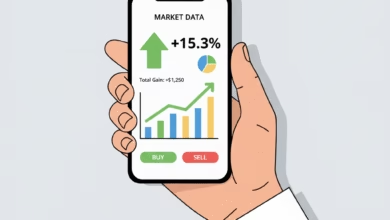
Student loans are a type of financial aid that helps students pay for the costs associated with higher education. These costs can include tuition, fees, books, and living expenses. Unlike scholarships or grants, student loans must be repaid with interest over time.
Types of Student Loans

There are two primary types of student loans: federal and private.
-
Federal Student Loans: These loans are provided by the U.S. Department of Education. They often offer lower interest rates and more flexible repayment options compared to private loans.
- Subsidized Loans: Based on financial need, interest doesn’t accrue while you’re in school, during deferment periods, or during certain periods of grace.
- Unsubsidized Loans: Interest accrues from the time the loan is disbursed.
- PLUS Loans: These loans are available to graduate students and parents of dependent undergraduate students.
-
Private Student Loans: Offered by banks, credit unions, and other private lenders, these loans typically require a creditworthy cosigner. Interest rates and repayment terms can vary widely.
The FAFSA: Your First Step
To qualify for federal student loans, you must complete the Free Application for Federal Student Aid (FAFSA). This form is used to determine your eligibility for federal student aid, including grants, work-study programs, and loans.
How Student Loan Interest Works

Interest is the cost of borrowing money. The interest rate on your student loan will determine how much you’ll pay back in addition to the principal amount you borrowed. Interest can be capitalized, meaning it’s added to your principal balance, or it can be deferred, meaning it’s added to your balance at a later date.
Repaying Your Student Loans
Once you graduate or leave school, you’ll enter a repayment period. There are several repayment plans available, including:
- Standard Repayment Plan: Fixed monthly payments over 10 years.
- Graduated Repayment Plan: Lower monthly payments at the beginning that gradually increase over time.
- Extended Repayment Plan: Fixed monthly payments over 25 years.
- Income-Driven Repayment Plans: Your monthly payment is based on your income and family size.
Benefits and Drawbacks of Student Loans

Student loans can provide the financial means to pursue a higher education, but they also come with significant responsibilities.
Benefits
- Access to higher education: Student loans can help you afford college.
- Potential for higher earnings: A college degree often leads to higher earnings over a lifetime.
Drawbacks
- Debt burden: Student loan debt can be a significant financial burden.
- Impact on future financial decisions: Student loan debt can affect your ability to buy a home, start a business, or save for retirement.
Tips for Managing Student Loan Debt
- Create a budget: Track your income and expenses to see how much you can afford to pay toward your loans.
- Consolidate your loans: Combining multiple loans into one can simplify your repayment process.
- Explore income-driven repayment plans: These plans can make your monthly payments more affordable.
- Consider refinancing: If interest rates have dropped, refinancing your loans could save you money.
Student loans can be a valuable tool for financing your education, but it’s important to understand the terms and conditions of your loans before you borrow. By carefully considering your options and developing a solid repayment plan, you can manage your student loan debt and achieve your financial goals.






